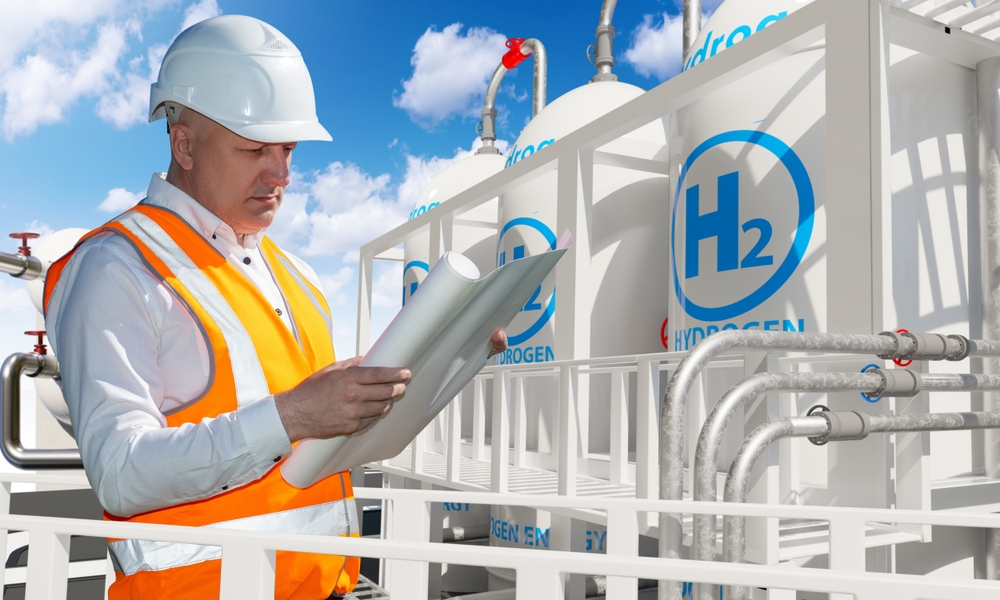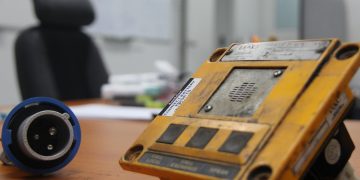The Facts About Roar Solutions Revealed
The Facts About Roar Solutions Revealed
Blog Article
Examine This Report about Roar Solutions
Table of ContentsAll About Roar SolutionsAll About Roar SolutionsThe Basic Principles Of Roar Solutions
In order to protect installations from a possible explosion a method of evaluating and categorizing a potentially dangerous area is required. The function of this is to guarantee the right option and setup of tools to ultimately stop an explosion and to ensure security of life.
(https://calendly.com/thomascarrillo4740-proton/30min)
No equipment should be set up where the surface temperature of the tools is above the ignition temperature level of the offered hazard. Below are some usual dirt dangerous and their minimal ignition temperature. Coal Dirt 380C 225C Polythene 420C (melts) Methyl Cellulose 420C 320C Starch 460C 435C Flour 490C 340C Sugar 490C 460C Grain Dirt 510C 300C Phenolic Resin 530C > 450C Aluminium 590C > 450C PVC 700C > 450C Residue 810C 570C The likelihood of the danger existing in a concentration high adequate to create an ignition will certainly vary from location to place.
In order to identify this risk an installation is divided right into locations of danger depending upon the quantity of time the hazardous is existing. These areas are referred to as Areas. For gases and vapours and dirts and fibers there are 3 areas. Area 0 Zone 20 A dangerous atmosphere is very likely to be present and may exist for long periods of time (> 1000 hours annually) or perhaps constantly Area 1 Area 21 A dangerous environment is feasible but not likely to be present for lengthy periods of time (> 10 450 C [842 F] A classification of T6 implies the minimum ignition temperature is > 85 C [185 F] Unsafe area electric equipment possibly made for use in higher ambient temperature levels. This would certainly showed on the score plate e.g. EExe II C T3 Ta + 60C( This means at 60C ambient T3 will certainly not be surpassed) T1 T1, T2, T3, T4, T5, T6 T2 T2, T3, T4, T5, T6 T3 T3, T4, T5, T6 T4 T4, T5, T6 T5 T5, T6 T6 T6 A T Class score of T1 means the optimum surface area temperature created by the instrument at 40 C is 450 C. Presuming the connected T Course and Temperature level rating for the devices are suitable for the area, you can always make use of a tool with a much more rigid Department rating than required for the location. There isn't a clear response to this concern sadly. It really does rely on the kind of equipment and what repairs require to be carried out. Devices with specific test procedures that can not be done in the area in order to achieve/maintain 3rd party ranking. Should come back to the manufacturing facility if it is before the equipment's solution. Field Repair By Authorised Worker: Complicated testing might not be called for nonetheless specific procedures might need to be adhered to in order for the devices to preserve its third celebration score. Authorised personnel have to be utilized to carry out the job appropriately Fixing need to be a like for like substitute. New component should be taken into consideration as a direct substitute calling for no special screening of the devices after the repair is full. Each tool with a harmful ranking ought to be evaluated independently. These are laid out at a high level below, but also for more comprehensive details, please refer straight to the standards.
Not known Details About Roar Solutions
The equipment register is an extensive database of devices documents that includes a minimum collection of fields to identify each item's place, technological parameters, Ex-spouse classification, age, and ecological data. This details is essential for tracking and managing the equipment efficiently within harmful areas. On the other hand, for regular or RBI sampling examinations, the grade will be a mix of Thorough and Close assessments. The proportion of Detailed to Close inspections will be identified by the Tools Threat, which is assessed based on ignition danger (the possibility of a source of ignition versus the possibility of a combustible environment )and the unsafe location classification
( Area 0, 1, or 2). This variant will additionally affect the resourcing demands for job preparation. Once Great deals are defined, you can develop tasting plans based on the example dimension of each Whole lot, which describes the number of random equipment products to be checked. To figure out the needed example size, two elements require to be reviewed: the size of the Whole lot and the category of evaluation, which indicates the degree of effort that should be used( minimized, normal, or boosted )to the evaluation of the Great deal. By integrating the classification of assessment with the Lot size, you can after that establish the ideal rejection requirements for an example, implying the allowable number of faulty items located within that sample. For even more information on this procedure, please describe the Power Institute Guidelines. The IEC 60079 typical recommends that the maximum interval between assessments ought to not go beyond 3 years. EEHA inspections will likewise be performed beyond RBI campaigns as component of arranged maintenance and devices overhauls or repairs. These assessments can be credited toward the RBI example dimensions within the influenced Great deals. EEHA inspections are carried out to recognize faults in electric equipment. A weighted scoring system is essential, as a solitary item of tools may have multiple mistakes, each with differing levels of ignition threat. If the combined rating of both evaluations is less than twice the mistake score, the Lot is deemed acceptable. If the Whole lot is still considered inappropriate, it has to undergo a full official source assessment or validation, which might set off stricter assessment methods. Accepted Lot: The root causes of any kind of mistakes are determined. If a common failure setting is found, extra tools might require assessment and fixing. Mistakes are identified by severity( Safety and security, Integrity, Home cleaning ), guaranteeing that urgent problems are examined and addressed immediately to mitigate any effect on security or operations. The EEHA database need to track and record the lifecycle of mistakes along with the rehabilitative activities taken. Executing a robust Risk-Based Assessment( RBI )technique is important for making sure conformity and safety and security in managing Electric Devices in Hazardous Areas( EEHA) (eeha). Automated Fault Rating and Lifecycle Monitoring: Easily take care of mistakes and track their lifecycle to enhance examination accuracy. The intro of this support for risk-based evaluation even more reinforces Inspectivity's setting as a best-in-class remedy for governing conformity, in addition to for any kind of asset-centric examination use instance. If you are interested in discovering more, we invite you to request a demo and discover how our solution can change your EEHA monitoring procedures.
The Ultimate Guide To Roar Solutions

In terms of explosive threat, a harmful area is an environment in which an eruptive environment is present (or might be expected to be existing) in quantities that call for unique preventative measures for the building and construction, installation and use tools. hazardous area course. In this post we check out the obstacles faced in the work environment, the threat control measures, and the needed proficiencies to function securely
These substances can, in particular conditions, create eruptive atmospheres and these can have significant and tragic effects. Most of us are acquainted with the fire triangle eliminate any one of the 3 components and the fire can not take place, however what does this mean in the context of dangerous locations?
In many instances, we can do little regarding the levels of oxygen in the air, however we can have significant influence on sources of ignition, for example electrical tools. Harmful areas are recorded on the dangerous area classification illustration and are determined on-site by the triangular "EX-SPOUSE" indication. Here, among various other vital details, areas are divided right into three kinds depending on the threat, the possibility and period that an eruptive environment will exist; Zone 0 or 20 is considered one of the most hazardous and Zone 2 or 22 is regarded the least.
Report this page